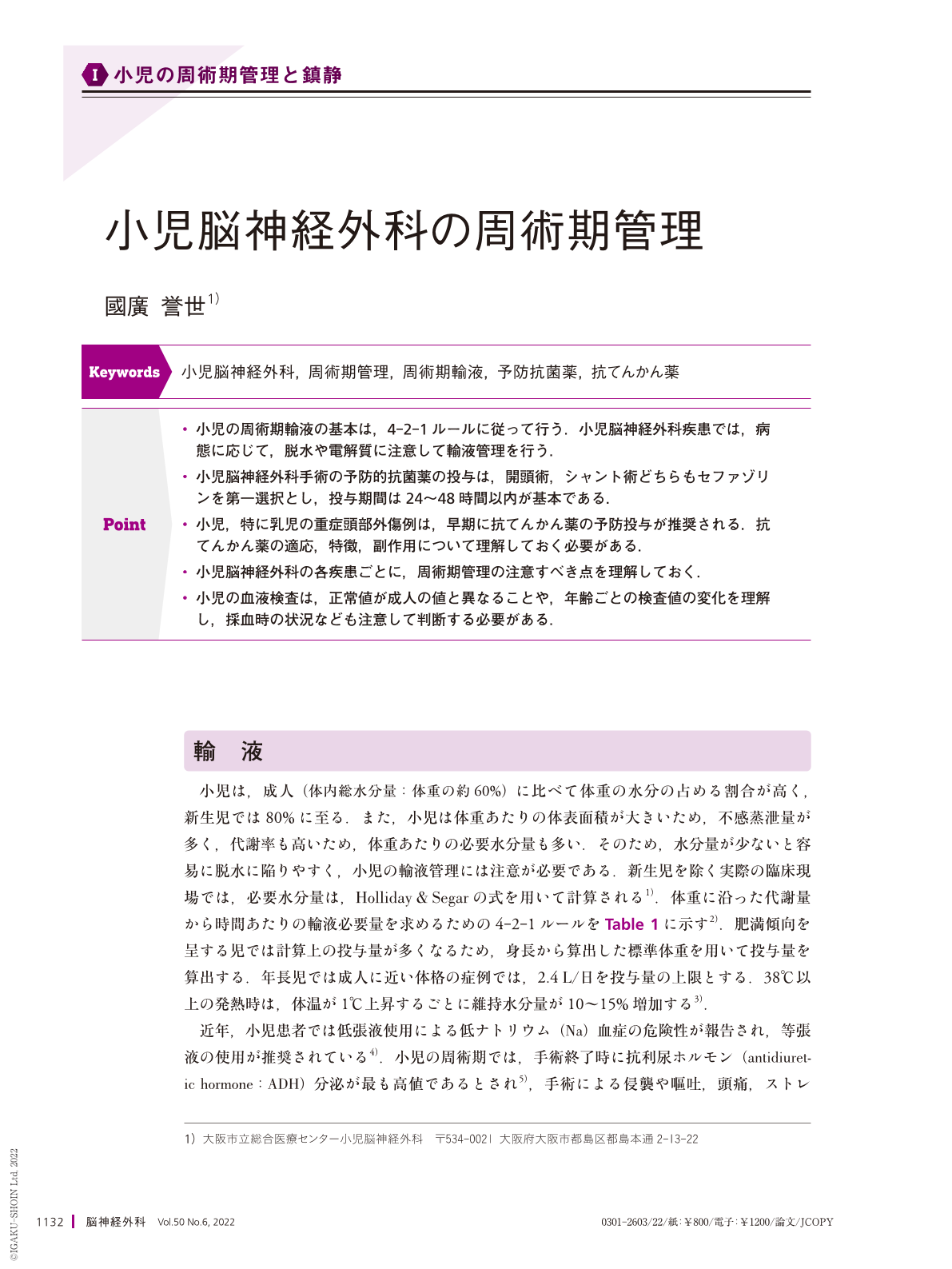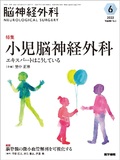Japanese
English
- 有料閲覧
- Abstract 文献概要
- 1ページ目 Look Inside
- 参考文献 Reference
Point
・小児の周術期輸液の基本は,4-2-1ルールに従って行う.小児脳神経外科疾患では,病態に応じて,脱水や電解質に注意して輸液管理を行う.
・小児脳神経外科手術の予防的抗菌薬の投与は,開頭術,シャント術どちらもセファゾリンを第一選択とし,投与期間は24〜48時間以内が基本である.
・小児,特に乳児の重症頭部外傷例は,早期に抗てんかん薬の予防投与が推奨される.抗てんかん薬の適応,特徴,副作用について理解しておく必要がある.
・小児脳神経外科の各疾患ごとに,周術期管理の注意すべき点を理解しておく.
・小児の血液検査は,正常値が成人の値と異なることや,年齢ごとの検査値の変化を理解し,採血時の状況なども注意して判断する必要がある.
Appropriate perioperative management can facilitate good outcomes in pediatric neurosurgical patients. This section discusses infusion therapy, prophylactic antibiotics, and antiepileptic drugs in the perioperative management of pediatric neurosurgical patients. Fluid requirements were calculated using the Holiday and Segar formula and the 4-2-1 rule for determining hourly infusion requirements based on metabolic rate and body weight. Recently, the risk of hyponatremia with the use of hypotonic solutions has been reported, and an isotonic electrolyte solution with 1-2.5% glucose is recommended for maintenance infusions in the perioperative period. Pediatric perioperative prophylactic antibiotics have been recommended as follows: application of cephazolin(30 mg/kg)with a redosing interval of 3 h intraoperatively and continuation for 48 h or less postoperatively. However, even for shunt surgery, there are currently no evidence-based protocols regarding specific antibiotic recommendations or the duration of prophylactic antibiotics. Early antiepileptic prophylaxis is recommended in cases of severe head trauma in children, especially infants. Available intravenous antiepileptic drugs should be used with an understanding of their indications, characteristics, and side effects.

Copyright © 2022, Igaku-Shoin Ltd. All rights reserved.


